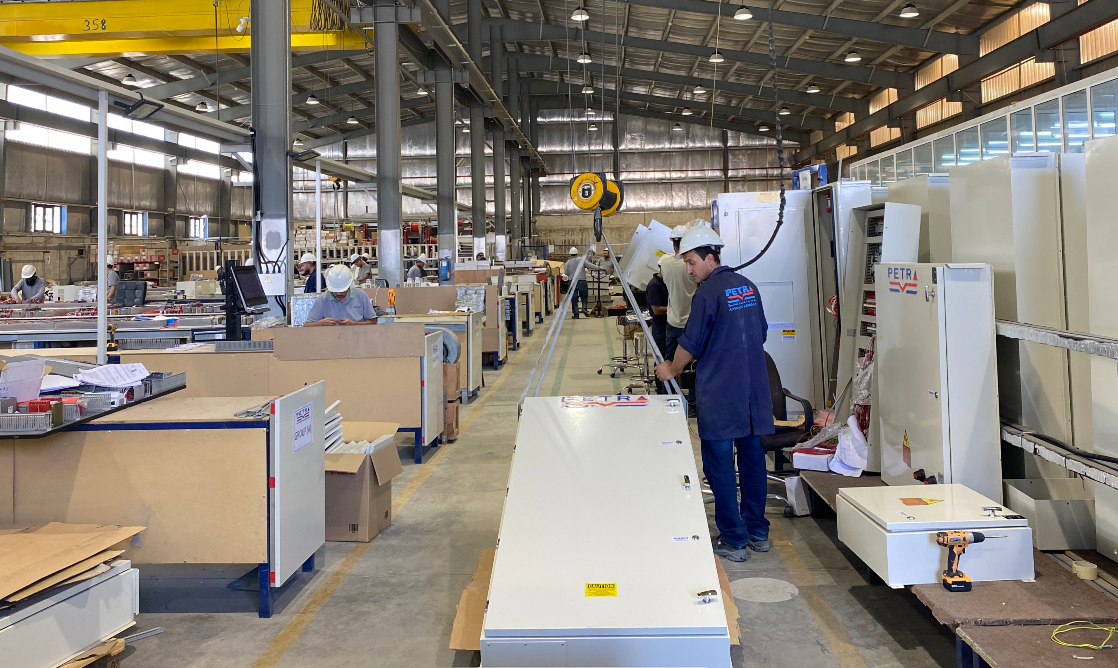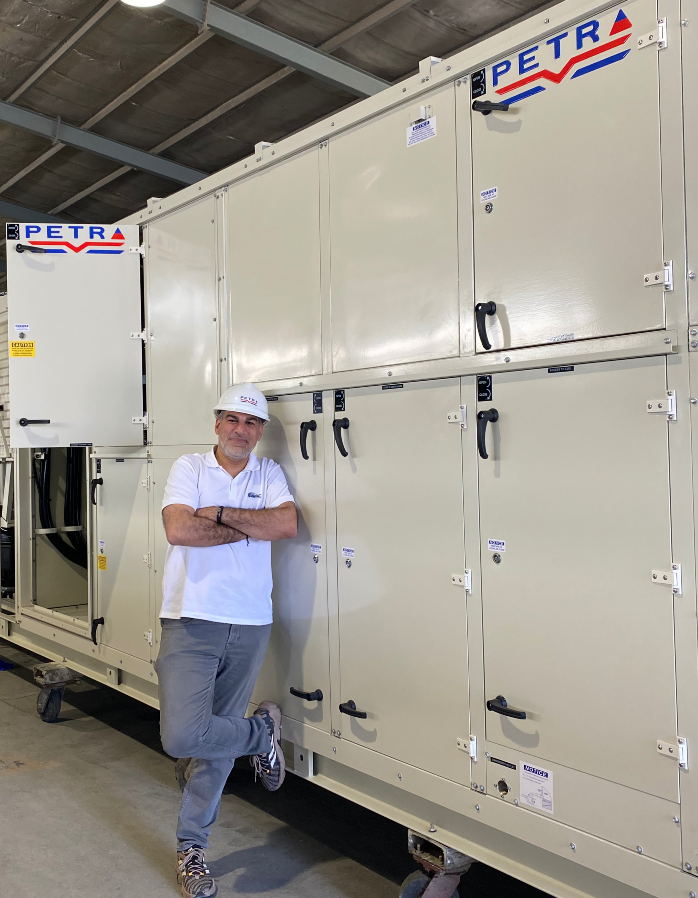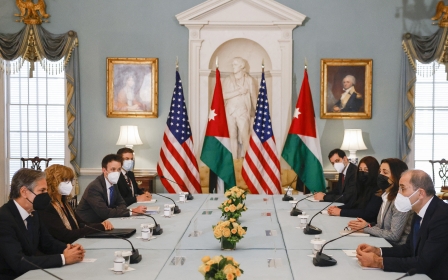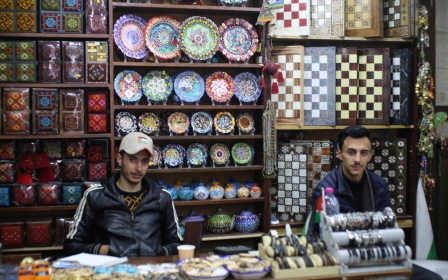'Mexico of the Middle East': Can Jordan become a nearshoring hub?
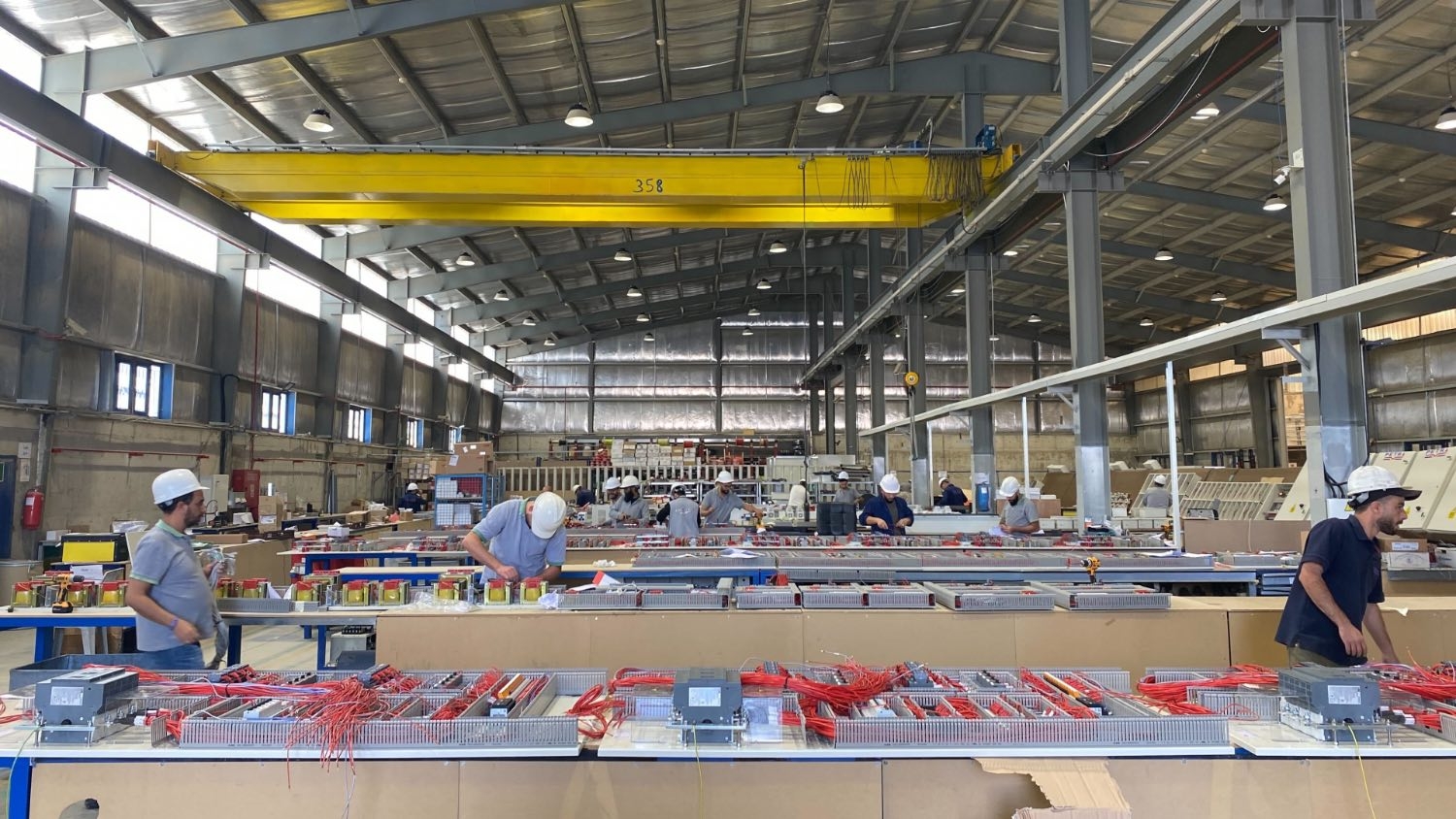
A dusty 40-minute drive southeast of Amman brings you to a patch of desert where a sprawling complex of blue buildings sit. Inside, robots gyrate as they weld together steel frames and "fibre lasers" cut designs into sheet metal.
“We must be innovative. We are working in a digital economy,” Ismail, who is programming a computerised cable punching machine, told Middle East Eye. “It’s one of the most sophisticated in the world,” he nodded at the equipment, “and it is here in Jordan.”
The factory on the outskirts of Jordan’s capital belongs to Petra Engineering Industries, a manufacturer of customised heating and cooling, or HVAC systems.
Outside the production area, containers are filled with products ready to be sent to the port of Aqaba and shipped across the globe - 70 percent of Petra’s HVAC units are exported to the US. The company counts Nvidia, Tesla and Google among its clients.
“We have a niche,” Firas Abu Wishah, a company board member whose family owns Petra, told MEE on a recent tour of the factory in al-Mwaqqar, Jordan. “Our engineering is the secret sauce. Everything is customised. We are building the bespoke Brioni of HVAC units.”
New MEE newsletter: Jerusalem Dispatch
Sign up to get the latest insights and analysis on Israel-Palestine, alongside Turkey Unpacked and other MEE newsletters
Petra is heralded as a Jordanian success story, one the kingdom hopes to replicate.
At 17.4 percent of GDP, manufacturing is one of Jordan’s largest sectors, employing about 217,000 people in a country of 10 million. Jordan hopes to double that number in the next ten years, as it looks to fix its ailing economy.
“Manufacturing is an unlikely story for Jordan. It’s a sector that needs to be better organised. But it can go a long way in addressing Jordan’s biggest challenge - unemployment,” Merissa Khurma, the Middle East programme director at the Wilson Center, told MEE.
'No work'
The challenge for the small nation squeezed between Iraq, Syria, Israel, the occupied West Bank and Saudi Arabia is staggering. Jordan was already grappling with neighbouring wars and the weight of more than 1.3 million Syrian refugees when the pandemic slammed its tourism-dependent economy.
Since 2019, total unemployment has ticked up from 19 percent to 23 percent. A relatively strong growth rate of 2.2 percent last year did little to dent that number, which stands at 50 percent for the Hashemite Kingdom’s youth. Meanwhile, prices are rising and young people are dejected.
Twenty-seven-year-old Nabil* and 25-year-old Mohammad* spoke to MEE outside a falafel shop near Amman’s downtown. “There is no work here in Jordan. The government just puts out plans. Nothing happens,” Nabil said.
Both men have mechanical engineering degrees and speak fluent English but cannot find jobs.
The abundance of engineers in Jordan, one of the highest per capita rates in the world, underscores many of the paradoxes at play in Jordan’s economy, and specifically its manufacturing industry.
'Our FTA with the US is an untapped goldmine'
- Firas Abu Wishah, Petra Engineering Industries
On paper, Jordan should be competitive. It is stable and positioned close to trade routes like the Suez Canal. Besides having an educated workforce, the kingdom has low labour costs relative to the West and more Free Trade Agreements (FTAs) than any other Arab country. Those include the EU, Canada and US. It is an ideal candidate for "nearshoring" - where businesses move operations to the closest country with a qualified workforce and lower costs.
Jordan has tried to target manufacturing. The southern port city of Aqaba is home to a special economic zone with a five percent corporate tax rate, duty-free import on goods used in production, and tax exemptions on property and land. Yet Aqaba has long been overshadowed by free zones in neighbouring places like the UAE.
“The tax and regulatory regime in Aqaba is internationally competitive. It’s not the rules,” Sheldon Fink, a longtime Jordanian investor and previous CEO of the Aqaba Industrial Estate, told MEE. “Jordan has a structural problem.”
“The real question is does Jordan encourage the development of an entrepreneurial class? And the answer is ‘No’,” Fink said. “The Jordanian government sees attracting investment as its function and excludes the private sector. The government is not opposed to people making money, but the economy is run from the top down.”
FTAs
Jordan has historically been sustained by a vast patronage network between the government and tribes. Public payrolls and pensions comprised nearly 65 percent of the government’s budget in 2021. Jordanians have generally looked to the state for work.
But with the government now cash-strapped, that has begun to change. In the garment industry where South Asian ex-pat workers typically make up the workforce, today Jordanians - mostly women - comprise about 30 percent of employees.
Jordan’s garment industry has been one of the main beneficiaries of the kingdom’s 20-year-old FTA with the US. Last year, Garments accounted for 66 percent of exports to the US, more than any other sector, according to the Amman Chamber of Industry.
But to critics, the garment industry is an example of how Jordan has failed to utilise its trade agreements and diversify its economy, specifically manufacturing.
'The infrastructure is quite meaningful to support sophisticated manufacturing [in Jordan]'
- Mazen Darwazah, Hikma executive vice chairman
Salaries for garment workers start at about 250 Jordanian dinars ($353) a month for a 48-hour workweek. The value-add from Jordan’s garment industry is well below that of other regional states like Turkey and Tunisia.
“In principle, the FTAs are good for Jordan, but the government has not facilitated trade and manufacturing the way it should,” Yusuf Mansur, a former minister of state for economic affairs, and now development consultant, told MEE.
Raghad AlKhojha, CEO of the American Chamber of Commerce in Jordan, says the kingdom’s FTA with the US has been underutilised in part by cultural barriers. “Jordanian companies have been intimidated by the US, while the US is a big market with limited knowledge of Jordan. When I say I'm from Jordan, Americans reply 'Georgia'."
Jordanian manufacturers had focused on nearby markets in Syria and Iraq and wars in those countries hit the industry hard.
Abu Wishah, from Petra Engineering, said one lesson his family learned early on was to think global. The company almost collapsed when Iraq, one of its biggest markets, invaded another, Kuwait, in the first Gulf War.
“Jordanian companies need to aggressively go after sophisticated markets. Our FTA with the US is an untapped goldmine,” he said.
UK-listed pharmaceutical giant Hikma is planning to expand manufacturing in Jordan with an eye towards increasing exports to the US and EU.
The Jordanian-founded company alone accounts for about five percent of Jordan’s total national exports and nearly 75 percent of its pharmaceutical exports.
Mazen Darwazah, the executive vice chairman of Hikma, told MEE that Jordan has competitive advantages in both cost and skillset.
“For a dollar I pay in the US, my costs come down to 75 or 80 cents in Europe. If you're talking about Jordan, it’s at 55-60 cents,” Darwazah told MEE in an interview at Hikma’s new Mena headquarters in Amman.
Mazen says Jordan also has the human capital to support industry, which is important for the pharmaceutical industry where manufacturing is highly automated.
Along with their Lebanese neighbours, Jordanian tech workers and scientists have historically filled the ranks of white-collar professionals in the wealthier Gulf region.
“The infrastructure is quite meaningful to support sophisticated manufacturing here,” Darwazah said. “We have more back offices now in Jordan for tax consolidation, intellectual property and marketing, along with growing R&D.”
Branding
Darwazah and Abu Wishah say that Jordan has been wrongly associated with conflicts in neighbouring states for too long, deterring foreign investors who could look to Jordan as a nearshoring hub.
“Jordan has a branding issue,” said Nael Husami, CEO of the Amman Chamber of Industry.
'In Europe... it would take three years to do what you can do in Jordan in 6 months'
- Nael Husami, Amman Chamber of Industry
But many businesspeople say that is far from the whole story. Those who spoke with MEE on condition of anonymity complained about daunting bureaucracy, corruption and an uncertain regulatory environment.
“It’s a global economy, all you need is one bad story to scare off investors. Why would someone come to Jordan when they can go to Saudi or the UAE,” said a Jordanian businessman who previously worked in the royal court and asked to remain anonymous.
Husami pushed back against that narrative. “If you want to build a new factory, compare Jordan to Europe,” he said. “In Europe, with the licensing requirements and red tape, it would take three years to do what you can do in Jordan in six months.”
Energy prices in Europe have also more than doubled since Russia’s invasion of Ukraine. Meanwhile, China’s zero Covid policy and tensions with the US have also sent a chill through its businesses environment.
With the rollout of its economic vision plan, Jordan’s government has been pitching itself to the likes of Nike and Rivian as a nearshoring hub. On a smaller scale, AlKhojha, from the chamber of commerce, has already seen interest at trade shows in the US, stemming from China tensions.
“Today, mom-and-pop shops in the US would rather deal with a Jordanian company than a Chinese company. Lower wages and the FTA component give Jordan a competitive edge.”
That is music to Abu Wishah’s ears. “I see my country with the potential to become the next near-shoring hub. I want Jordan to be the Mexico of the Middle East with quality, niche manufacturing.”
But competition is running hot.
Flush with petrodollars, Jordan’s larger and richer neighbour Saudi Arabia is pushing ahead with plans to diversify its economy. With lower energy costs and cheaper financing, it aims to triple industrial output and increase the value of exports to about $149bn by 2030.
Fink, former CEO of the Aqaba Industrial Estate, told MEE that Jordan needs to position itself where it is competitive, such as in industries that are not energy or water intensive. Jordan is one of the most water-scarce countries in the world.
Despite the challenges, Abu Wishah is optimistic about Jordan's nearshoring potential as he prepares deliveries for New York, Massachusetts and California from his plant in al-Mwaqqar.
“It's easier for me as a Jordanian company to sell my product in the US than in the Middle East.”
Middle East Eye delivers independent and unrivalled coverage and analysis of the Middle East, North Africa and beyond. To learn more about republishing this content and the associated fees, please fill out this form. More about MEE can be found here.


